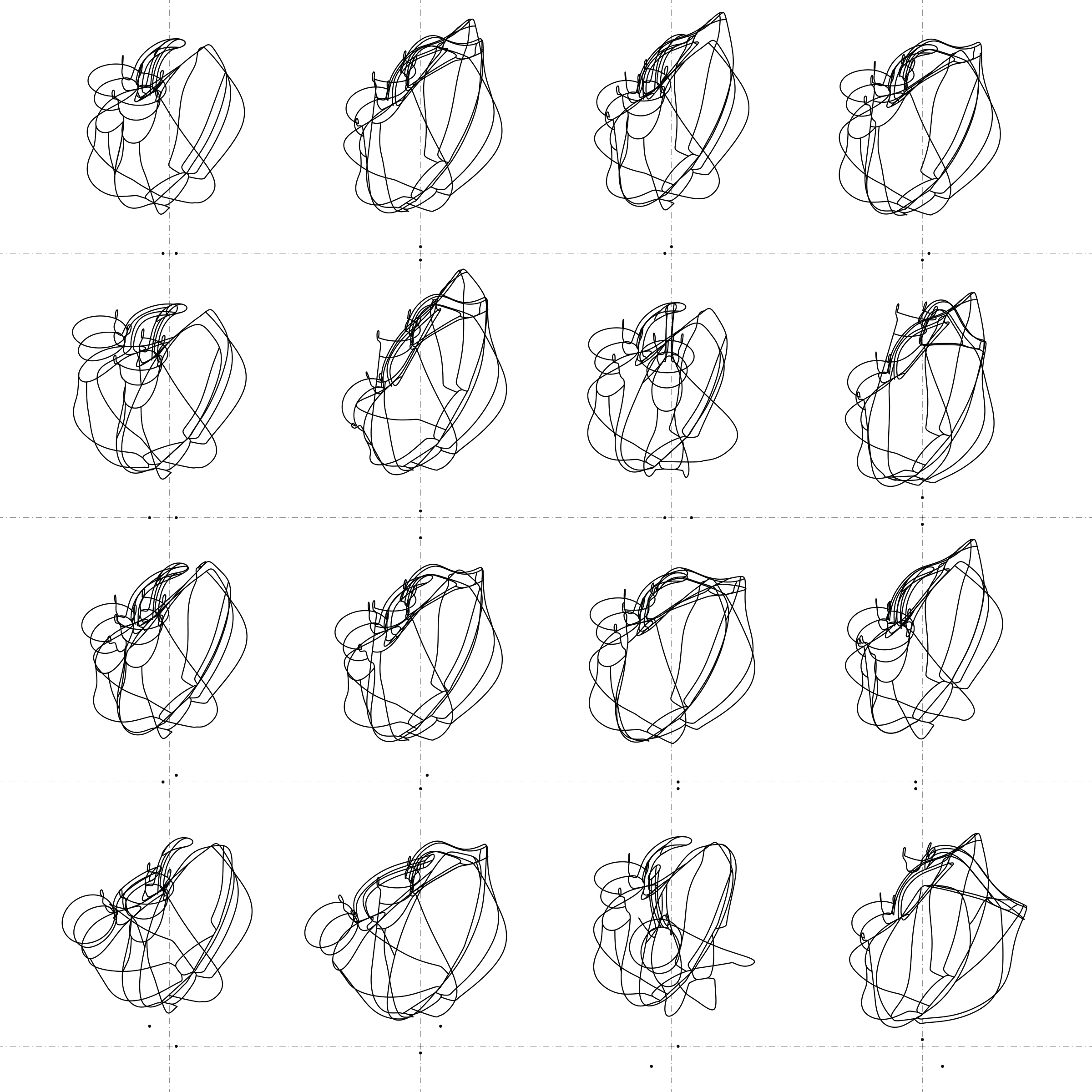Gestural GPS
Drawing Codes Exhibition
Coding is not often considered a tool for positioning subjects in relation to objects. Rather coding is deployed to distribute geometry, optimize material or shape, or negotiate parameter sets. These operations work on and with objects rather than on the spacing or interval between things. Our drawing considers how coding might produce new forms of visuality and perception seeking to draw without the objectivity of orthographic projection or the monocular vision of the station point camera. This is in response to our interest in exploring the impact of technology on field of view. The inventions of optical devices have long shaped concepts of visuality. This drawing considers how the algorithm constructs forms of visuality.
Our code is a simple script that numerically locates two cameras at distinct x, y and z coordinates. The script allows six degrees of freedom in camera positioning. Our objective is to use coding as a GPS device for producing a series of gesture drawings. The gesture drawing is a short duration hand sketch meant to capture objects in motion. The object we view here is an askos, a classical Greek vessel for transporting wine. The form of the askos is bilaterally symmetrical with a distinct front and back, top and bottom. Its form is well suited to reveal the location of a moving subject. Our code composites two views of the askos producing a numerically controlled stereoscopic image. Each camera views half of the object and two scenes are composited in each drawing. The algorithm operates as a device to construct new forms of vision. After all, without sight, distributions of matter might only be sensed as math.
murmur: Heather Roberge
Coding is not often considered a tool for positioning subjects in relation to objects. Rather coding is deployed to distribute geometry, optimize material or shape, or negotiate parameter sets. These operations work on and with objects rather than on the spacing or interval between things. Our drawing considers how coding might produce new forms of visuality and perception seeking to draw without the objectivity of orthographic projection or the monocular vision of the station point camera. This is in response to our interest in exploring the impact of technology on field of view. The inventions of optical devices have long shaped concepts of visuality. This drawing considers how the algorithm constructs forms of visuality.
Our code is a simple script that numerically locates two cameras at distinct x, y and z coordinates. The script allows six degrees of freedom in camera positioning. Our objective is to use coding as a GPS device for producing a series of gesture drawings. The gesture drawing is a short duration hand sketch meant to capture objects in motion. The object we view here is an askos, a classical Greek vessel for transporting wine. The form of the askos is bilaterally symmetrical with a distinct front and back, top and bottom. Its form is well suited to reveal the location of a moving subject. Our code composites two views of the askos producing a numerically controlled stereoscopic image. Each camera views half of the object and two scenes are composited in each drawing. The algorithm operates as a device to construct new forms of vision. After all, without sight, distributions of matter might only be sensed as math.
murmur: Heather Roberge




©2025
murmur
